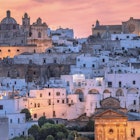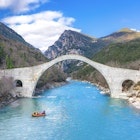Outdoors aficionados and adrenaline junkies, take note: there are still uncharted grounds to conquer only a few hours’ flight away from London, Paris or Berlin. The ‘other Europe’, Europe’s ‘wild west’ (or rather, southeast) – the Western Balkans may have featured in news headlines of past decades for entirely different reasons, but these days their magic is being rediscovered by travellers lured off the beaten track in search of new thrills.
Stunning landscapes ensure plenty of ‘wow’ moments for road-testing a range of outdoors adventures on a scene that has huge potential but is still largely managed by enthusiasts, while some age-old traditions provide enjoyable experiences to those eager for cultural immersion and more hedonistic pursuits. People here take their hospitality seriously, and one leaves with a gratifying sense of giving back to communities that are making efforts to develop a sustainable tourism future for their region.

Calling adrenaline junkies: outdoors thrills
Rafting and kayaking in Albania: Thanks to some of the most stunning scenery in the Balkans as well as several enthusiastic local tour operators, Albania is an up-and-coming contender on the European adventure sports scene.
Hiking in the Albanian Alps (home to bears, wolves and deer, among other wildlife) is particularly popular; the highlight is trekking the area around Theth and Valbonë villages, set in the dramatic wilderness of the Accursed Mountains.
However, in the country blessed with 362km of coastline as well as the Balkans’ largest lakes – Ohrid, shared with Macedonia, and Shkodra, bordering Montenegro – water-based adventures may well be your first choice. The well-established Outdoor Albania organises a variety of active tours, including guided kayaking trips. For impressive scenery it’s hard to beat Lake Shkopet in the north – an amazingly scenic reservoir on Mat river with quiet small beaches and a huge hanging bridge. Blissfully encircled by dense vegetation of the Mat gorge, it’s only a 90-minute drive from Tirana.
For a more challenging splash, sustainable-tourism pioneer Albania Rafting specialises in rafting trips through Vjosa and Osumi river canyons. The base for the former trip is at Përmet in southern Albania, with a natural thermal bath nearby for some bonus post-rafting relaxation, while the latter starts and ends at Berat, taking you past the 13km canyon’s eight stunning waterfalls.
Tip: Kayaking on Lake Shkopet is of moderate difficulty and possible from March to November. Vjosa river has class III rapids, and the best time for rafting is June to October; Osumi river is grade II and the ideal rafting period is February to June.

Hiking and mountain biking in Kosovo: Kosovo is a land with fascinating heritage, and the most memorable experiences here incorporate the exploration of local culture into outdoors activities well off the beaten track.
A recommended operator, Rugova Experience is championing the responsible tourism concept by employing local guides on its hiking tours and organising accommodation and meals in mountain villages. Based in Peja (Peć), it runs hikes primarily in the scenic Rugova Valley in western Kosovo – this section of the wild Accursed Mountains, the southern foothills of the Dinaric Alps, is rich in caves, lakes and waterfalls, and boasts Kosovo’s highest peak Gjeravica (Ðeravica; 2656m). Rugova Experience also offers longer cross-border treks into Albania and Montenegro on the increasingly popular Peaks of the Balkans trail, which follows old shepherd paths through 192km of impressive, wild alpine scenery at altitudes of up to 2300m.
This entire region is also well suited for mountain-biking adventures. Another successful local operator, Catun runs cultural biking tours through western Kosovo’s Dukagjin region; they are a good way to experience the local heritage and traditions. Options include religious tours between major Orthodox and Islamic sites in the area, kulla tours to 19th-century fortified tower houses, and off-road tours through the mountainous landscape of Erenik river valley.
Also worth mentioning is the Swedish NGO Cultural Heritage without Borders, which has contributed to the promotion of Kosovo’s natural and cultural heritage and the development of sustainable tourism by organising the annual Tour de Culture cycling event in a different part of Kosovo each September since 2008.
Tip: The best time for trekking the Peaks of the Balkans is June to October; due to border-crossing procedures, the eight-day trek should be booked one month in advance. The base for all Catun’s bike tours is the town of Junik, a two-hour bus ride from Pristina.
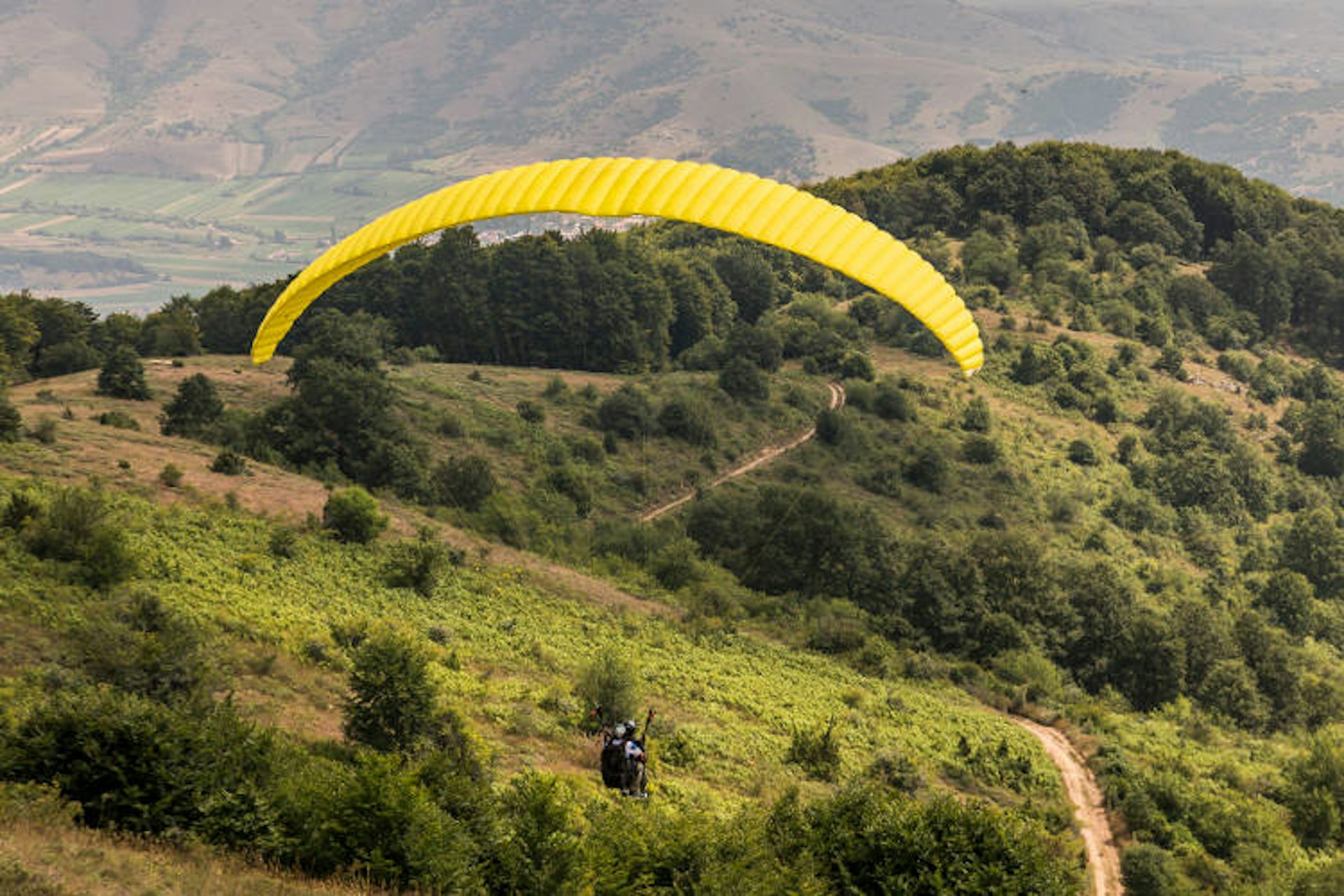
Paragliding and rock climbing in North Macedonia: The range of adventures on offer in North Macedonia is arguably limited only by imagination and weather, from splashing around beautiful Lake Ohrid’s beaches in summer to hitting the slopes at the country’s premier ski resort, Mavrovo, in winter. Macedonia Experience is an all-purpose adventure outfitter that offers a wide range of active tours for adrenaline junkies in addition to equally diverse options for culture and leisure enthusiasts.
Galičica national park is the premier paragliding location in North Macedonia, which is among the most affordable destinations in Europe for this sport. Not only are the views from the top of rugged Mt Galičica (1750m) over the shores of Lakes Ohrid and Prespa fantastic, but the 228-sq-km national park also hides extremely diverse (and endemic) flora and fauna. Other popular paragliding spots are Mečkin Kamen (1450m) near North Macedonia’s highest town, Kruševo, and the Treskavec monastery area. This breathtaking medieval site rises at the very top of Mt Zlatovrv (1422m), whose towering granite rock formations have naturally morphed into a climbing and bouldering mecca in recent years.
Another highlight is mixing it up with a climbing-and-caving adventure among the limestones of the wonderful Matka canyon. Mountain Experience specialises in guided rock-climbing tours from one to several days, and can provide training by professional alpinists.
Tip: The best time for paragliding is April to October, and the base for Mt Galičica activities is the town of Ohrid. Treskavec monastery is about 10km from Prilep; a paved road to the top of the mountain has recently been completed, making it easily accessible. Matka canyon is a half-hour drive from the centre of the capital Skopje and has onsite restaurants, meaning it can get crowded on weekends.
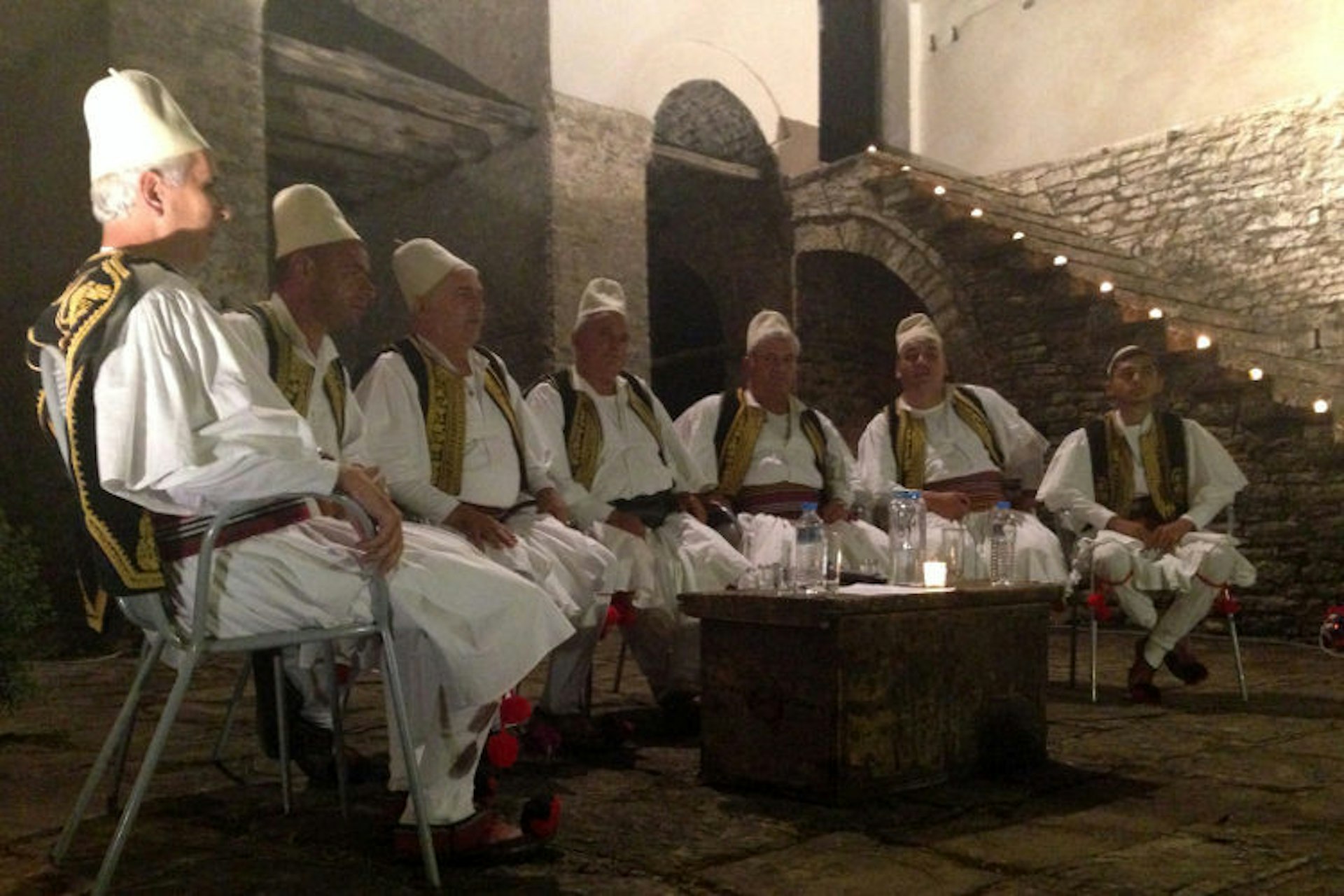
Hedonist heartland: from poetry to wine
Lord Byron’s trail through Albania: Back in 1809, poet Lord Byron went on a grand journey through Greece and Albania with his friend John Cam Hobhouse, a romantic adventure that was the inspiration for some famous verses of Childe Harold’s Pilgrimage. Today, Auron Expeditions offers a fantastic way to retrace Lord Byron’s steps on a hiking or horseback-riding tour. Individually designed trips are organised with local guides, and include stays at family-owned guesthouses as well as sampling of seasonal village cuisine and wine. The route takes modern-day adventurers through amazing Albanian countryside, along the Vjosa river to Tepelenë castle where despotic Ali Pasha himself welcomed the famous poet. But the trip also takes in Gjirokastra, the Unesco-listed ‘city of stone’ and hometown of both communist dictator Enver Hoxha and novelist Ismail Kadare, the inaugural Man Booker Prize winner. If you’re lucky, you can even catch a traditional iso-polyphonic singing performance in this town.
Tip: The horse-riding tours range from one to 10 days and are organised five times a year (April through October). Riding expertise is not required, and local-breed work horses are well accustomed to the rugged mountainous landscape.

The craft of filigree in Kosovo: There are several good reasons to come to Prizren, but how about mastering the beautiful craft of filigree? The tradition has been going strong in Kosovo since the 15th century, passed down through families of artisans for generations. The local Filigrani workshop, whose small group of 10 artisans create bespoke pieces for clients, is where you can get a first-hand experience of this intricate old craft; not only can you take a tour to observe the professionals at work, but if you’re keen, you can also arrange a short course – from a couple of weeks to a few months – to master the trade yourself. Best of all, with some help, you can create a lovely silver pendant in just a few minutes! Another nearby place with a rich tradition of local crafts is Gjakova (Đakovica), where you can take a tour of the surviving artisan shops in the Ottoman-era Çarshia e Madhe (Grand Bazaar), the oldest of its kind in Kosovo. Among the craftsmen are quilt-makers, saddlers, silversmiths and embroiderers.
Tip: Filigrani workshop (filigranpz@gmail.com; I-4, Rr Tirana 3; closed Sundays) is based in an abandoned communist-era factory building; it’s easy to find the jewellery shop in town that sells their beautiful products.
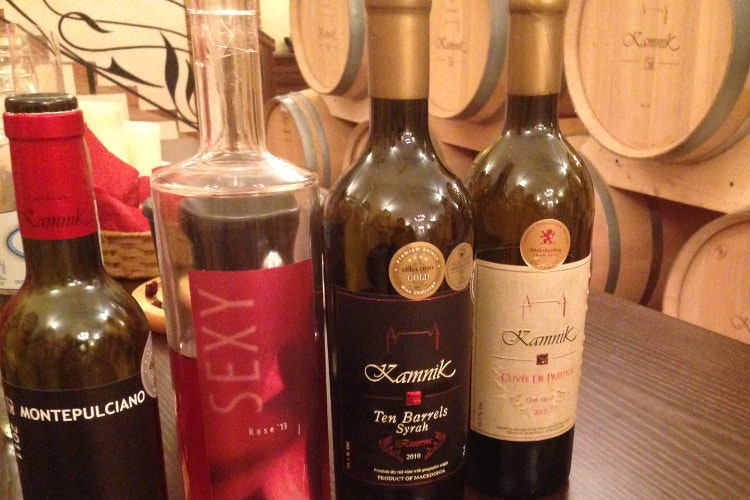
Wine-tasting around North Macedonia: Tikveš wine region is Macedonia’s winery heartland, with a tradition of wine making that reaches back to the 4th century BC and was kept alive in the region’s monasteries during the Turkish rule. The base for visiting the vineyards is the town of Kavadarci, which celebrates the region’s viniculture with a merry wine carnival each September. Some of the recommended wineries are Tikveš (the largest in southeastern Europe) and Elenov (the official cellar of the last King of Yugoslavia). If you don’t have time for full-on winery-hopping through Tikveš, a good alternative is Kamnik winery on the outskirts of Skopje. Specialising in upmarket labels, it’s one of the most awarded wineries in North Macedonia. After the wine-tasting and a tour of the vineyard and cellars, you can indulge in some gourmet dining at Kamnik’s Hunter’s Lodge restaurant, where the menu features wild game specialities and over 150 local and international wines.
Tip: Tours and tastings can be arranged directly with the wineries or through travel agents such as Macedonia Experience; combine them with visits to medieval monasteries in the area or boat trips and bird-watching on Lake Tikveš.

The Balkan soul: rural hospitality
Kosovo's tower homestays: A truly authentic experience, kulla (literally ‘tower’) is a fortified Albanian stone house built between the late 18th and early 20th century. It usually consists of three floors, with the ground floor housing animals, middle floor used by men, and the top floor reserved for guests (in the old days, women and children lived in an attached annex). Kullas were originally designed with a defensive purpose – in turbulent historic times, they served to protect the families from enemies. Some kullas are nowadays being restored and offered as a unique rural accommodation option for tourists, for example Konaku i Rame Zyberit in Junik and Isuf Mazrekaj in Drenoc, both in western Kosovo. Sleeping in the oda (shared guest room, originally used by the men for strategic meetings) is on the floor, with comfortable bedding. You can also count on tasty traditional meals based on organic local produce.
Tip: Kulla stays can be booked through the local tour operator Catun; the rate is €15 per person (shared bathroom) including breakfast. The homestays are usually combined with hiking and biking activities in the region.
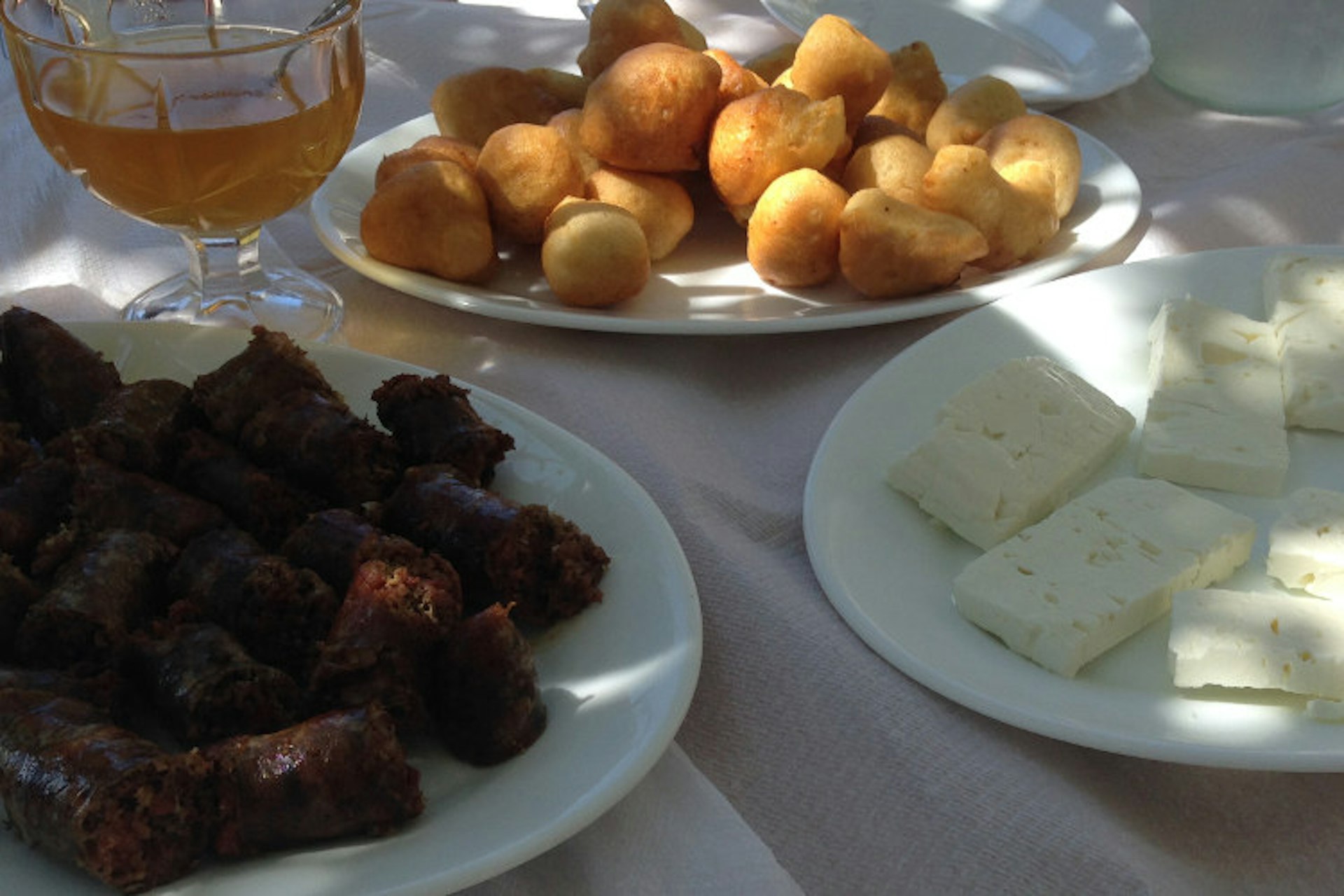
Mountain villages of Albania: A stay in two Albanian mountain villages, Qeparo and Piluri – located about 4km apart along the old Vlora–Saranda road near the Ionian coast in southern Albania – is a memorable immersion in traditional local hospitality and simple highland cuisine. Piluri is claimed to be the birthplace of traditional Albanian iso-polyphonic singing (which is inscribed on Unesco’s list of Intangible Cultural Heritage). It has fewer than 100 residents, but still keeps the singing tradition alive. Qeparo preserves the original architectural style of the region and guards some hundred-years-old olive trees. It also holds the dubious fame of being connected to an ex-head of the CIA, whose emigrant family originated from here. An easy nearby excursion is the Porto Palermo castle (associated with the notorious Ali Pasha), set on a picturesque peninsula overlooking the eponymous bay.
Tip: Both villages can be visited as part of the itinerary for a longer hiking tour or jeep safari, offered by Sipa Tours. For those who prefer DIY adventures, the seaside towns of Saranda and Himara make for a good base.
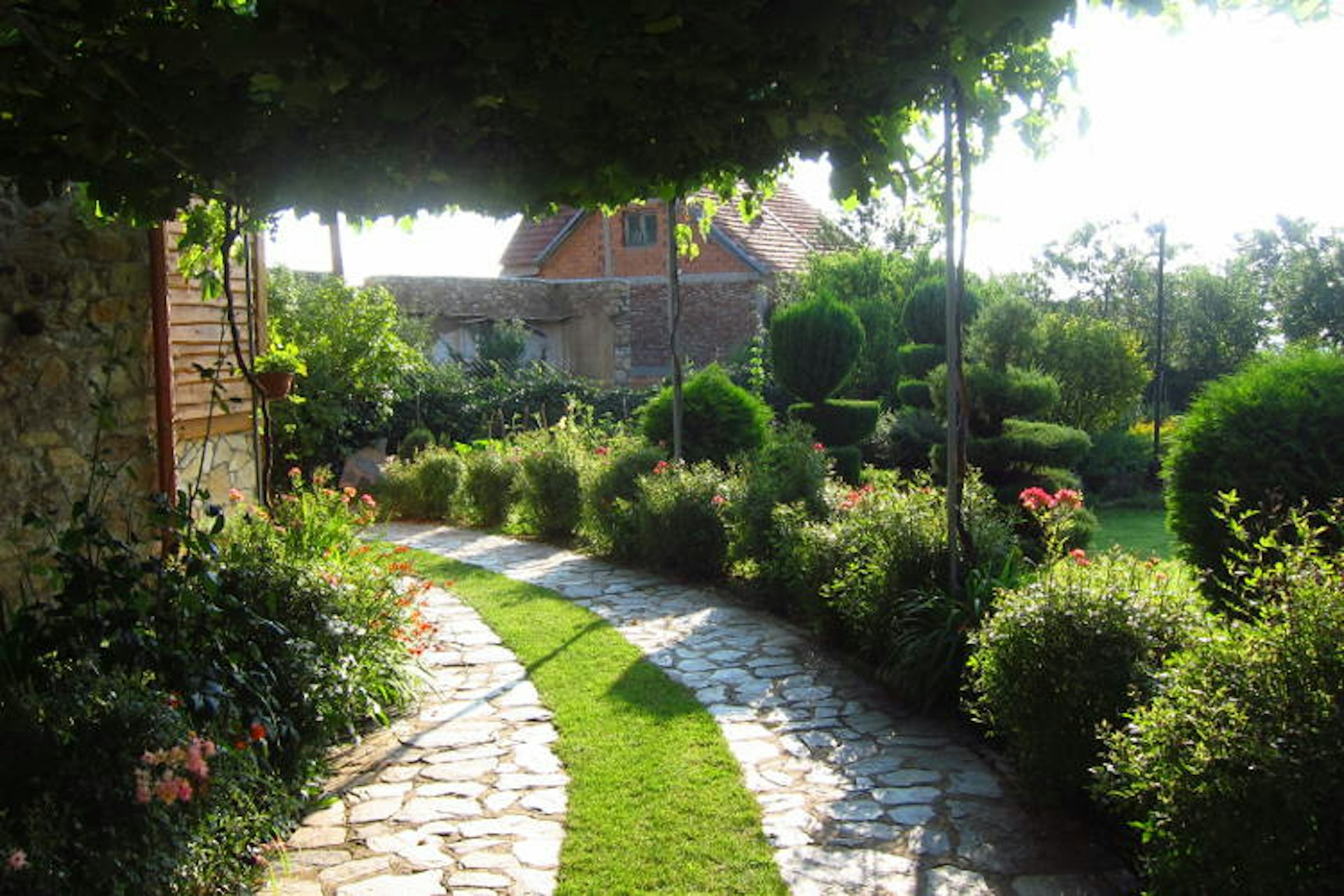
A dream guesthouse in North Macedonia: Former Pelister FC player Pece Cvetkovski is the owner of Villa Dihovo, located in the village of Dihovo at the foothills of Pelister national park and just a 10-minute drive from the town of Bitola. This rural guesthouse offers wonderful hospitality on a ‘pay what you think it’s worth’ basis – the only set prices are for the homemade wine, beer and rakija (domestic brandy). Pece is a fan of the slow-food concept; the mushroom soup, straight from the family’s traditional kitchen, is particularly recommended. The friendly host can organise hiking, mountain biking and other activities, as well as visits to nearby ancient ruins and monasteries. Swimming and skiing are also options, depending on the season; additional perks include free wireless internet and therapeutic sport massage upon request.
Brana Vladisavljevic is Lonely Planet’s Destination Editor for Southeastern and Eastern Europe. She’s a big fan of the Balkans and loves rediscovering the region. Follow her tweets @branavl.
Brana travelled to Albania, Kosovo and North Macedonia with support from Adventure Travel and Trade Association and Western Balkans Geotourism Council. Lonely Planet contributors don’t accept freebies in return for positive coverage.





